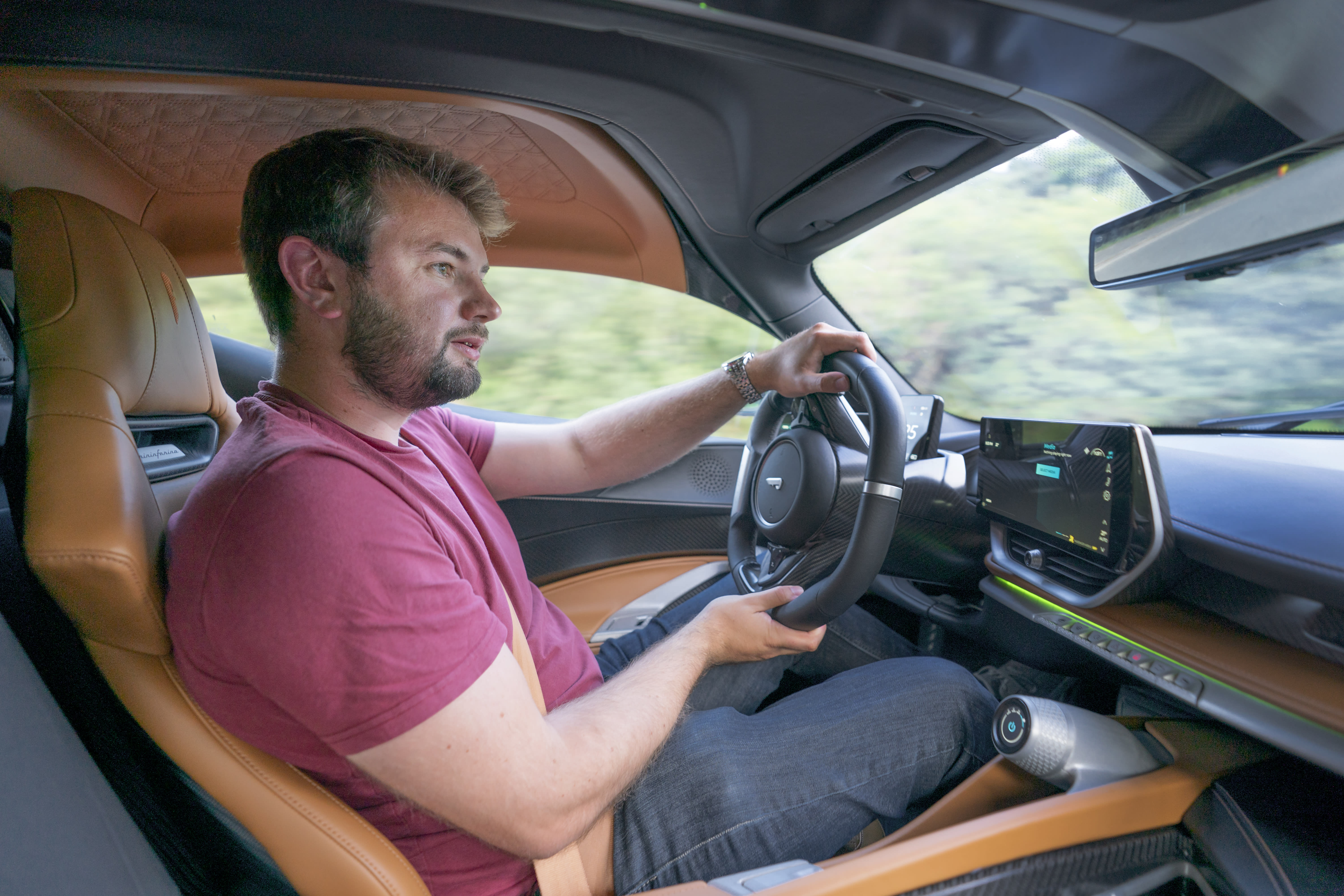
BMW X5 2024 Review & Pricing

Introduction
With luxury car manufacturers everywhere constantly updating their cars, it was only a matter of time before the BMW X5 was revamped. And whereas Audi just gave its Q8 model new lights and a new nose, the X5’s update is somewhat more comprehensive. Alongside a tweaked external design is a new interior with fresh technology, and a modified engine range with an improved plug-in hybrid system.
It all sounds very all-encompassing, but BMW has been careful not to get carried away with the updates and forget what made the X5 so popular in the first place. Space, luxury and driving dynamics remain crucial to the car’s continued success, so has BMW sacrificed any of those things in its pursuit of modernity and technology?
Select's rating score* - 4.4 / 5
At a Glance
The X5’s basic shape hasn’t changed, but there are plenty of fresh details on show. There’s a new grille (one of conventional proportions, thankfully) and there are new bumpers, as well as updated headlights and tail lights. It isn’t a wholesale change, but it’s enough to keep the X5 looking modern and upmarket.
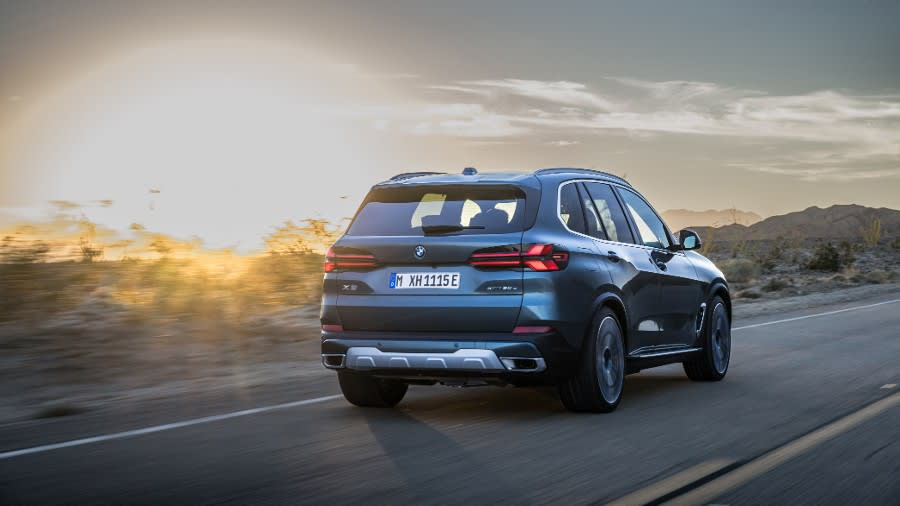
Internal upgrades are more dramatic, with a completely new dashboard that’s dominated by the Curved Display panel that spans most of the dash. Combining the touchscreen and instrument display in one housing, the system provides a sharper and more configurable user interface than before, with great graphics and quick responses.
That’s a good thing, because BMW has taken the opportunity to almost completely remove buttons from the dashboard, preferring to house almost everything, including the climate control, in the touchscreen. It isn’t the worst execution of the system - you can access the required screen with one tap no matter what - but the old car’s switches were easier to use. At least BMW has kept the iDrive controller for which it has become known, allowing drivers to navigate the infotainment screen almost by touch once they’ve learned their way around.
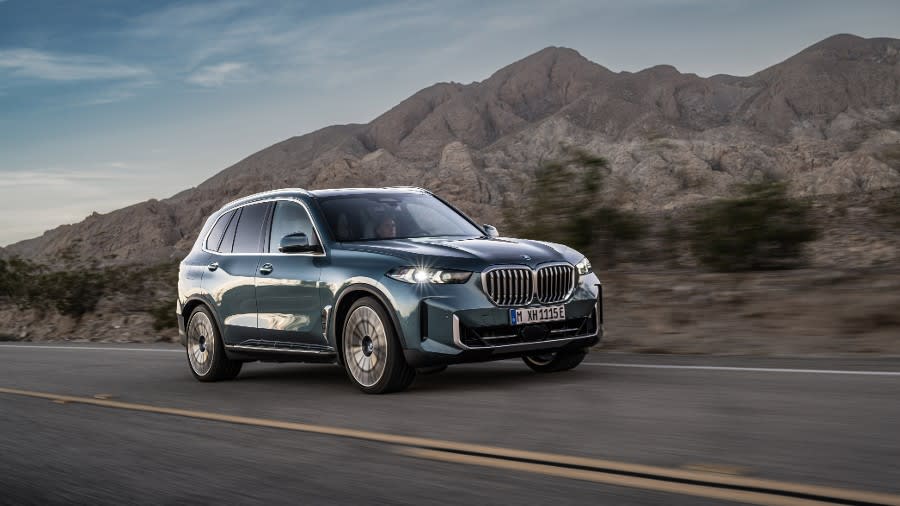
Under the skin, the X5 has changed only slightly, with many of the same basic powertrain options. However, the company has tweaked its already brilliant plug-in hybrid system, providing a larger battery and a more powerful electric motor, giving the new xDrive50e more power and range, as well as its already fabulous 3.0-litre six-cylinder engine. For company car drivers, that will be the engine of choice, but the 3.0-litre xDrive30d diesel will be enough for most private customers.
Whatever your situation, though, you’ll enjoy the way the X5 drives. It’s a big car, but it somehow manages to be both enormously comfortable and lively in corners, with pretty good control of that big body and great steering feel. And the high-performance X5 M Competition is even more spectacular.
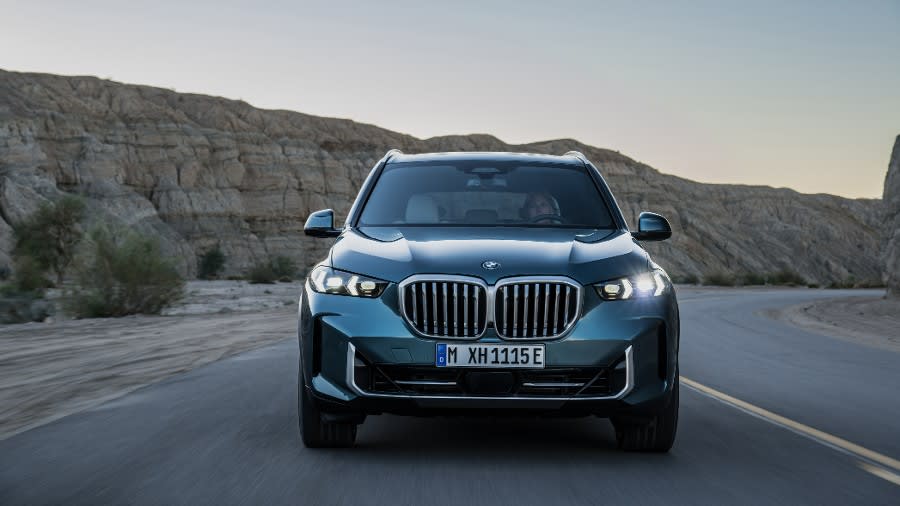
Key Features
The Curved Display and the new infotainment system it houses is the undoubted highlight of the new X5. As you’d expect from BMW, it’s very ergonomically laid out, so navigation is simple enough. It’s a crystal-clear screen, too, with plenty of resolution for sharp and detailed images, which helps to make it more readable. And even the inclusion of the climate control system in the screen is no disaster, with the temperature controls accessible from every display. It isn’t perfect — normal buttons would still be easier to use — but it’s one of the better touch-sensitive implementations we’ve seen.
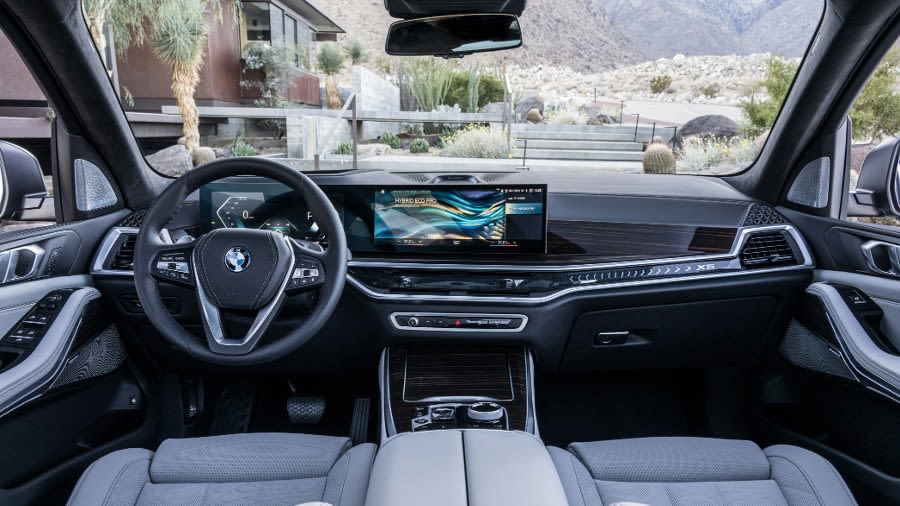
But if the infotainment system has any competition for top billing in the X5’s upgrade, it comes from the xDrive50e plug-in hybrid system. Building on the old ‘45e’ system, it takes much the same 3.0-litre straight-six petrol engine, but combines it with a bigger battery and a more powerful electric motor. That means it has more range than its predecessor, and it can use the electric motor more of the time, making it more efficient than before. But it’s still just as smooth, with a seamless transition between electric and petrol power, as well as immense performance when the two are used together.
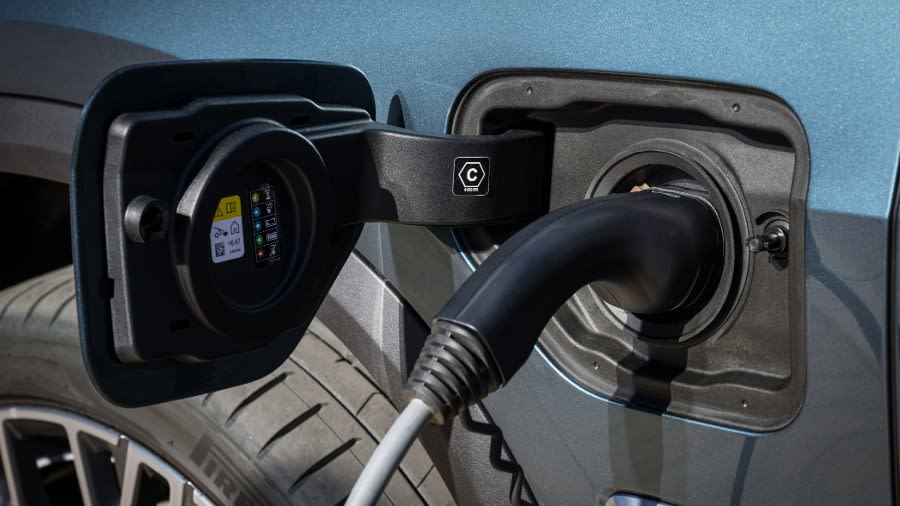
Battery
The xDrive50e comes with a 25.7kWh battery pack, which gives it a claimed range of around 60 miles on the official economy test. In the real world, you should manage 40 miles if you’re reasonably restrained and you might get 50 if you’re careful, but either will be enough for most local journeys. Driving around town, the car will be at its most efficient, and those who can charge regularly at home will be able to achieve impressive economy as a result.
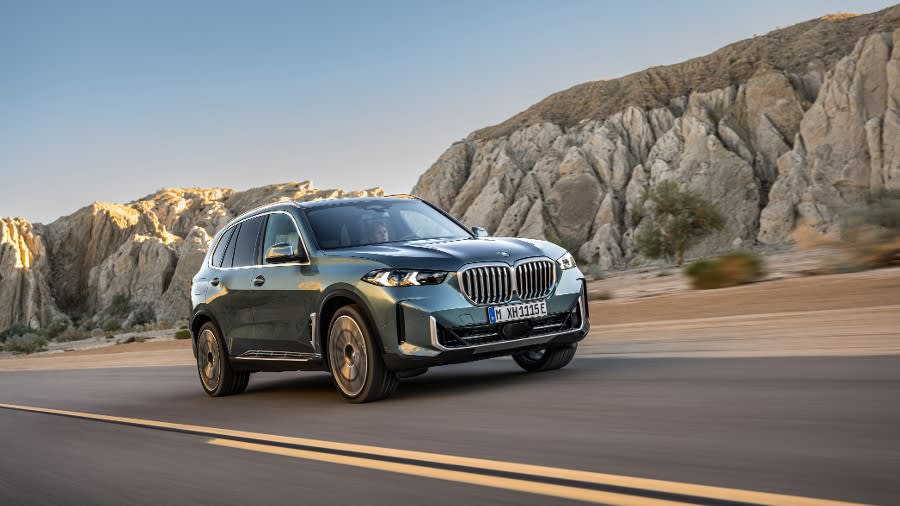
Performance & Drive
In essence, the X5 comes with a choice of four different engine options. The basic version, and probably the most desirable for most, is the xDrive30d, a 3.0-litre diesel, but you can choose a more powerful xDrive40d based on much the same six-cylinder engine. Or you can go for the twin-turbocharged 4.4-litre V8 petrol engine, which wears the M60i xDrive badge. And those with a real thirst for performance can choose the X5 M Competition, with a 625hp version of the same 4.4-litre engine.
For most customers, however, it’s the xDrive30d that makes the most sense, marrying a smooth, punchy, 298hp diesel engine with an eight-speed automatic gearbox and, like every other X5, BMW’s xDrive all-wheel-drive system. It’s a combination that’s difficult to beat in terms of economy while still offering plenty of power and capability off-road.
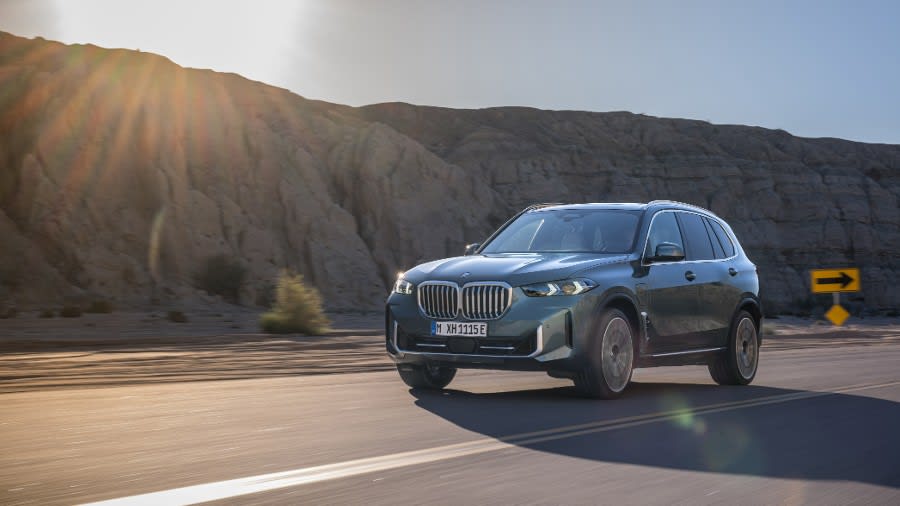
But perhaps more interesting – at least from an engineering standpoint – is the xDrive50e. Building on the already impressive 45e plug-in hybrid system available with the previous generation of X5, the system centres around a new 25.7kWh battery, which powers a 145kW electric motor, and a 3.0-litre straight-six petrol engine. Not only does the combination pump out an ample 490hp, but it also allows the car to cover 60 miles on a single charge, according to the official economy tests. In the real world, that’s probably more like 40 or 50, but it’s hard to tell because the engine is so smooth that it’s difficult to work out whether petrol or electricity is powering the car. Unless, of course, you put your foot down and get that lovely woofle from the exhausts as the six-cylinder engine goes about its business.
Although it must be said that woofle is not as nice as the gargle from the 4.4-litre V8 that powers the M60i xDrive and the X5 M Competition. Although neither is especially frugal, the power is awesome, and the V8 rumble that accompanies it is always spectacular.
Opt for the less powerful versions of the X5, however, and you get a fraction more ride comfort from the big SUV. Every version of the car is comfortable, particularly at motorway speeds, but the M Competition has a slightly scrappy ride at lower speeds. The advantage of that, however, is impressive handling for something so large. The M Competition models have especially impressive body control, which allows them to corner at tremendous speeds despite their size, although the basic xDrive30d hardly lacks agility. Whichever X5 you choose, it gets great steering and no hint of wallowiness or lurching through corners – it’s just the M Competition is a little stiffer, tauter and firmer than the others.
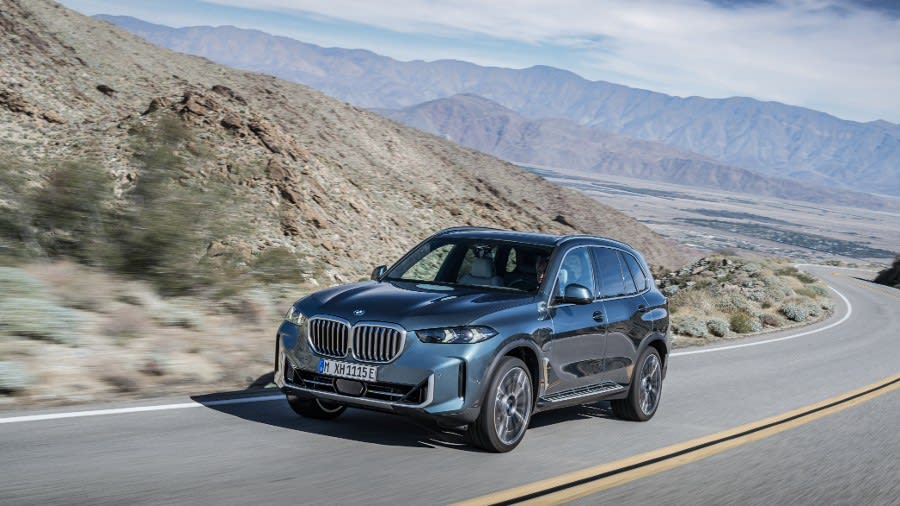
Charging
Because of a new charging unit designed to support both three-phase and single-phase charging, the xDrive50e can now charge at 7.4kW when hooked up to a domestic ‘wallbox’ charging point. As a result, even the X5’s fairly chunky new battery can be charged overnight on your drive, giving you maximum range when you come back to the car in the morning. The car’s charging routine can also be controlled using the My BMW App that allows access to vehicle functions from the driver’s smartphone. That means customers can set the car to charge when they want, should they need full charge available for a trip, or to take advantage of cheap-rate electricity.
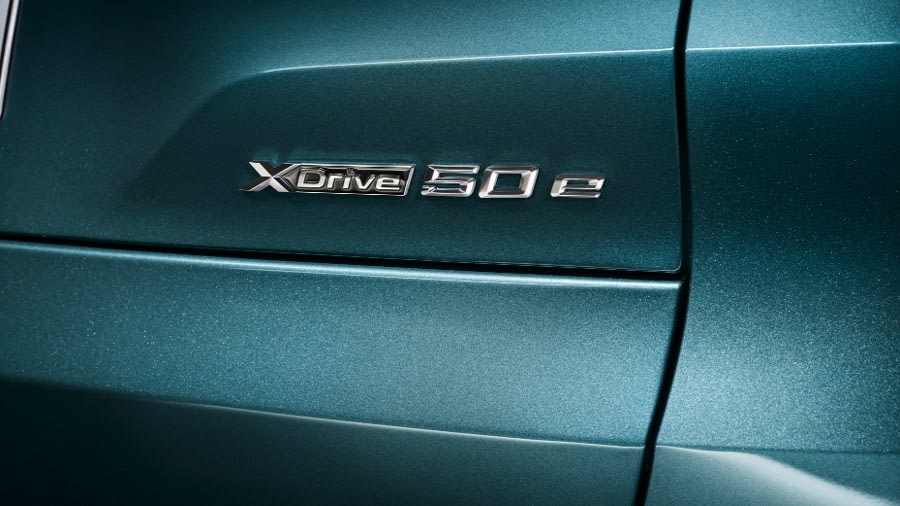
Running Costs & Emissions
How much the X5 costs to run will depend as much on your lifestyle and circumstances as on the powertrain you choose. For most private customers, the xDrive30d diesel will be more than powerful enough, and it’ll prove reasonably efficient – you should manage more than 30mpg on a long run – so it would be our go-to choice. Especially for those planning to tow, use the X5 off-road, or travel long distances. Three things, by the way, the xDrive30d is very good at.
But if you’re mostly going to pootle around town, the xDrive50e becomes a more promising option, particularly if you have off-street parking and the ability to charge. Thanks to its claimed range of more than 60 miles on a charge, those who just do the school run or shopping trips will find they need never use the petrol engine during the week, making the fuel economy quite promising. And for those leasing the X5 as a company car, the xDrive50e is a no-brainer, providing a much lower tax burden than any of the other engines.
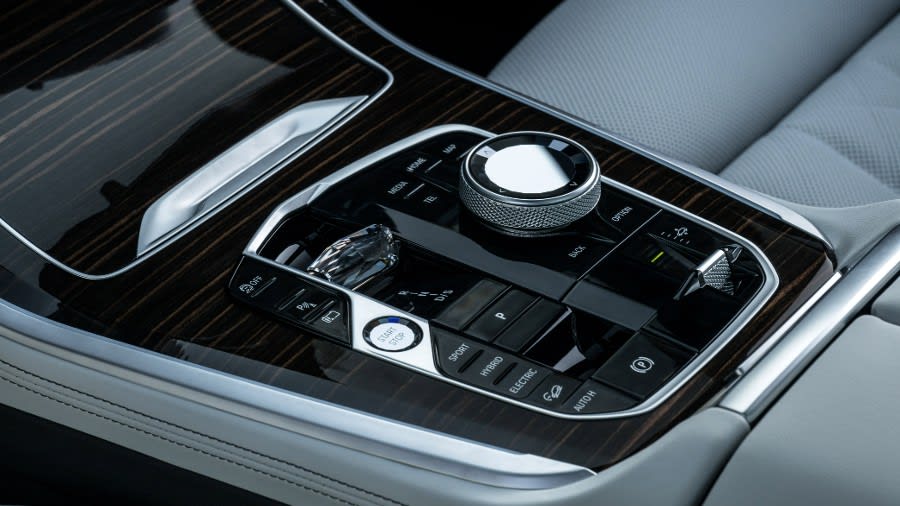
Interior & Technology
Although the X5’s basic internal dimensions — rear space, cargo capacity and so on — are unchanged, technology now dominates the experience for those in the front. BMW’s Curved Display, already in use in the iX SUV, 3 Series saloon and the new 5 Series, features here, providing a single housing for both the instrument display and the central touchscreen.
The screen uses BMW’s latest touchscreen interface, with really sharp graphics and logically laid out menus, making it easy to navigate despite being rammed with features. Part of its ease of use, however, comes from BMW’s trademark iDrive rotary controller, which allows drivers to navigate the system almost by feel, reducing the amount of time they’re obliged to spend looking at the screen. That’s a considerably safer way of doing things.
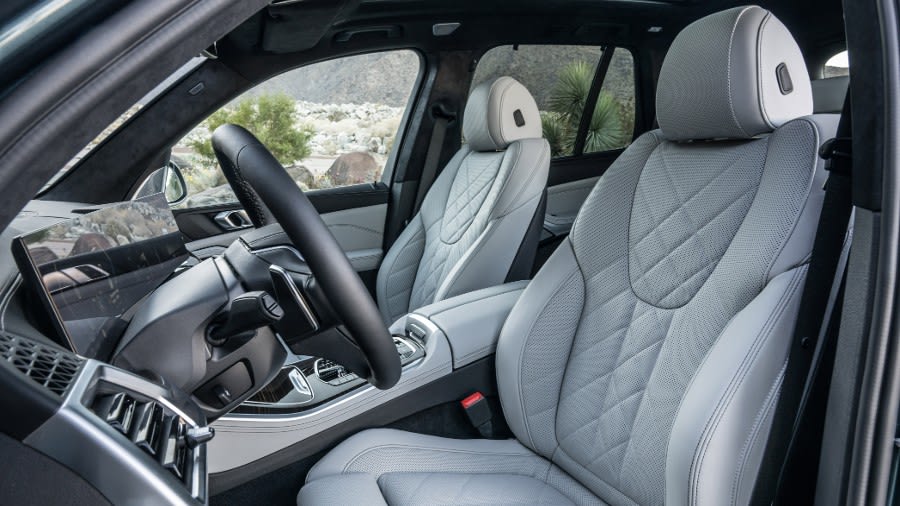
But even better than the iDrive system or the touchscreen is the digital instrument display, which is a marked improvement on that of the old car thanks to its less cluttered and much sharper display. It’s more configurable, too, which makes it easier to see the information you want right in front of you.
As far as the designers were concerned, however, the advantage of the new screens is the ability to remove clutter from the dash. With fewer buttons in place, space has been freed up for some clever new features despite the more minimalist design. Take, for example, the ambient lighting in the dash, which can ‘move’ in tune with vehicle functions. So when a linked phone is ringing, the dashboard will light up accordingly with a little animation, alerting you even when the phone is on silent.
Despite all this, BMW has retained the quality for which it is known. Everywhere you look, you’re surrounded by premium materials, and the way in which they fit together is superb. Admittedly, it doesn’t feel quite as solid as an Audi Q7 — few things do — but it’s remarkably solid and it certainly feels like a very premium product.
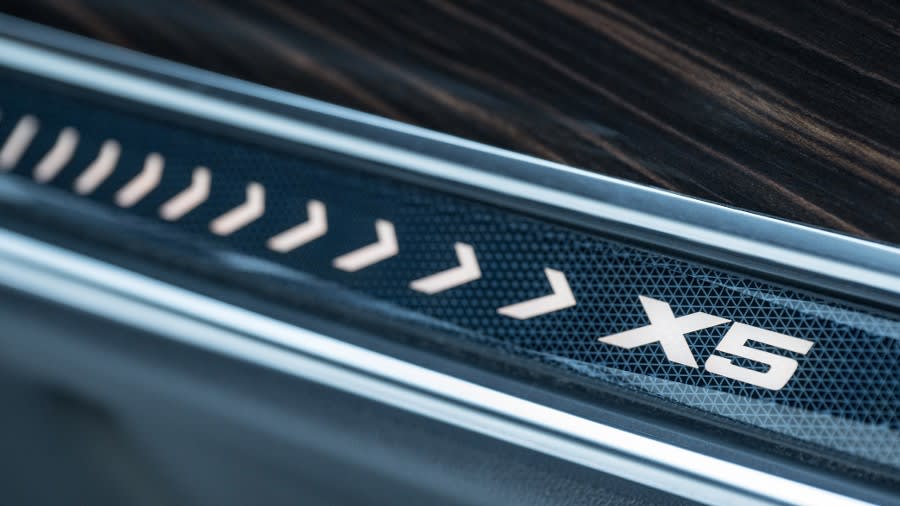
Practicality & Boot Space
The X5 is a very large car, so it’s no surprise to find plenty of space in there. For those in the front, that means there’s a huge amount of seat adjustment and a nice, big centre console. And because there’s so much space in there, it feels really light and airy, particularly if you go with the optional panoramic glass sunroof.
There’s a massive amount of space in the back, too, with loads of head- and legroom in the second row of seats. The seats are massive and remarkably comfortable, and even adults well over six feet tall will still have more than enough room to remain comfortable on drives of any distance.
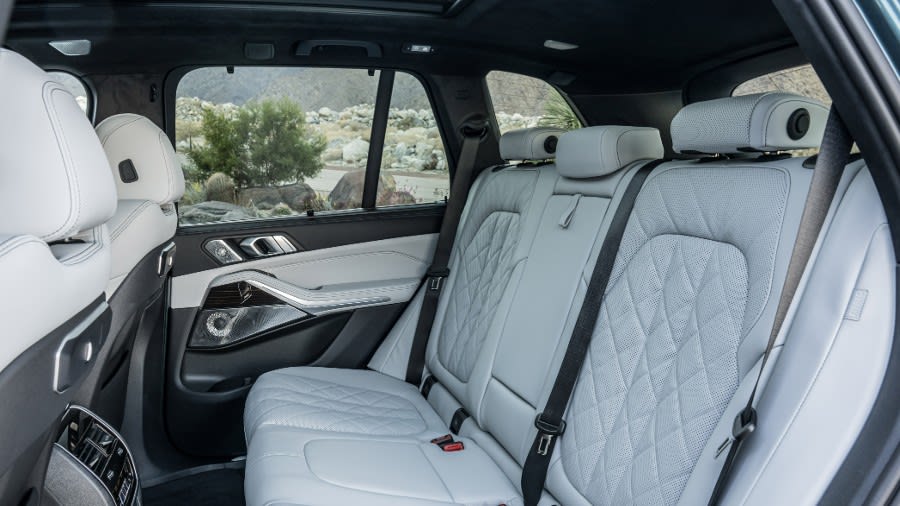
Sadly, the same can’t be said for those who occupy the sixth and seventh seats in seven-seat versions of the X5 (although you can’t have seven seats in a hybrid X5). Space back there is just about sufficient, but that’s all it is.
Boot space, however, is much more like it. Petrol- and diesel-powered versions of the X5 get 650 litres of luggage space in five-seat form, although the plug-in hybrid version is nowhere near as generous. Because of the hybrid system, part of which lives beneath the boot floor, there’s no option of a third row of seats, and boot space is limited to 500 litres. Still, that’s the same amount of space you’ll find in the back of a 3 Series Touring, so it’s hardly cramped.
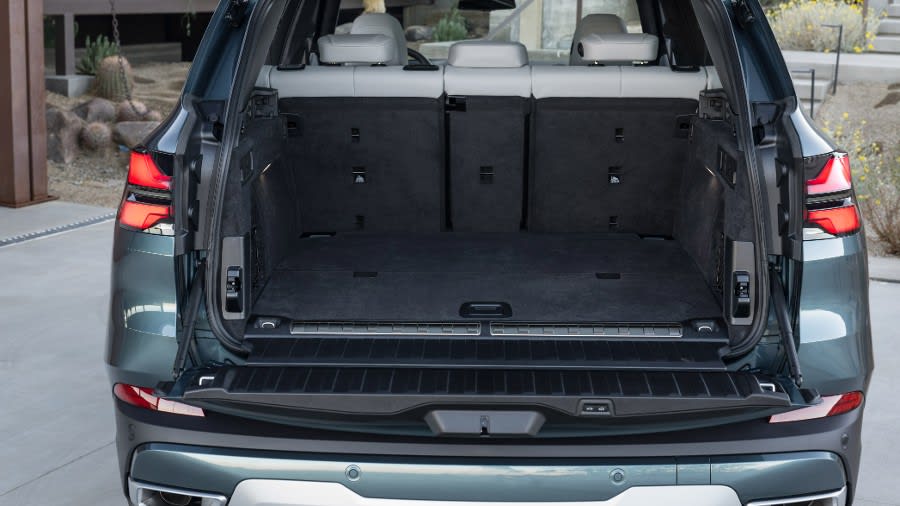
Safety
The X5 was last crash-tested in 2018, but because the new model is structurally much the same as that car, the rating remains unchanged. Not that that’s a problem, because the big BMW achieved a commendable five-star rating with strong showings in every area. An 89% rating for adult occupant protection was backed up by an 86% rating for child occupant protection, as well as solid showings in all other areas.
But BMW has fitted plenty of technology to help reduce the chances of drivers ever needing to test out the car’s safety credentials. All the usual suspects — autonomous emergency braking that can slow or even stop the car if the driver fails to respond to a hazard and lane departure warning — are all present and correct, while the cruise control system can work with the lane-keeping assistance tech to keep the car in the middle of its lane and a safe distance from the vehicle in front when it’s on the motorway. It’s a far cry from autonomous driving — you still have to keep your hands on the wheel and your eyes on the road at all times — but it’s a useful safety net on a long drive.
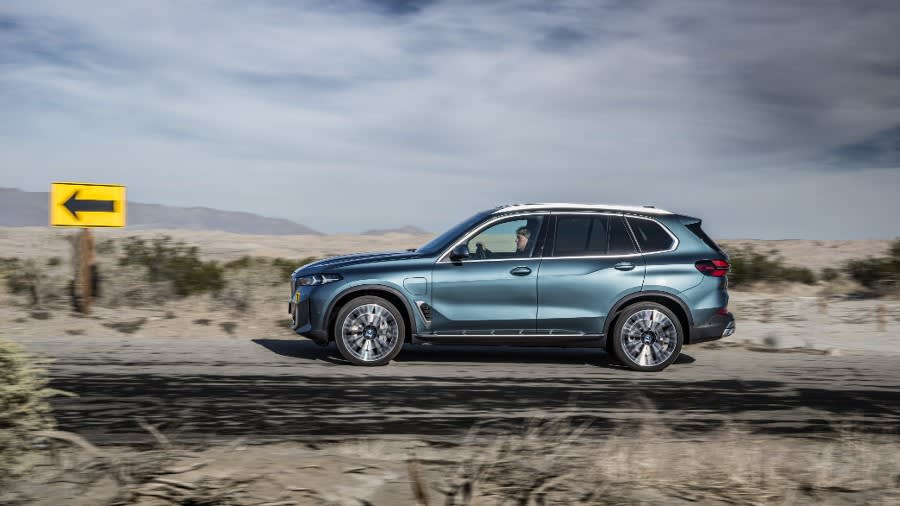
Options
The X5 range is pretty simple, really, with a four-tier line-up from which you can choose. The basic option, which is more than luxurious enough, is the xLine model, available solely with the xDrive30d diesel engine. That comes with everything you really need, including the Curved Display infotainment system, leather upholstery and climate control, not to mention big alloy wheels and some metal-effect body cladding for the extra off-road image. But most customers will probably prefer the M Sport version, which gets slightly sportier and cleaner lines, but only a handful of specification upgrades.
Alternatively, customers can go for the M models — the M60i xDrive and the X5 M Competition — both of which get their own bespoke equipment lists. Sportier styling is, of course, a staple on the menu, along with bespoke suspension and braking systems. Sports seats are part of the deal, too, and the X5 M Competition gets its own steering wheel and gear selector, as well as a load of M-specific driving modes.
As usual, the options list is pretty lengthy, with loads of ways available to upgrade your car. From paint colours to accessories and from alloy designs to tech toys, the options for customising your X5 are myriad.
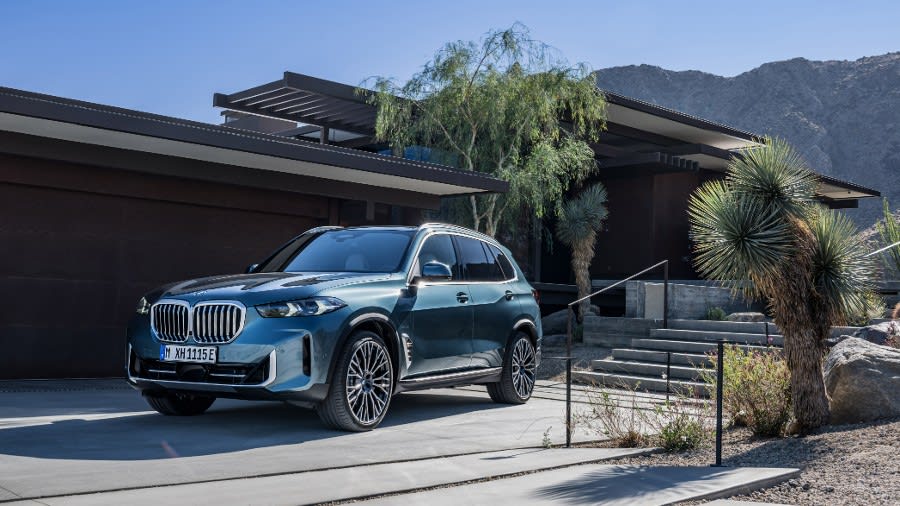
Rival Cars
BMW isn’t the only car company evolving its luxury cars all the time, and the market is becoming saturated with premium 4x4s vying for customers’ attention. Just recently, Audi updated its Q8 – albeit only slightly – to add a little more style and technology, and the brand’s other big 4x4 – the Q7 – is still a formidable alternative to the X5.
Mercedes-Benz has form, too, with the GLE that manages to offer incredible comfort and space, as well as a stylish exterior and a premium cabin. And that’s now offered in electric EQE SUV form, which will be a bonus for those of an eco-friendly disposition, or those seeking a company car.
Then there are the other two German rivals: the Porsche Cayenne and the Volkswagen Touareg. Both are big, well-built SUVs with supple rides and some great engines, but the Porsche races ahead with its incredible handling and its even more upmarket interior, both of which propel it to the top of this class.
If, on the other hand, you want something distinctly un-German, you could always choose the Volvo XC90, which has been among our favourite family SUVs ever since it was launched. Stylish, spacious and comfortable, it’s a very appealing package. As is the Lexus RX, which comes with a selection of hybrid systems for propulsion and gets a fabulously well constructed interior.
But if interiors are your thing, the Genesis GV80 has one of the best going. Comfortable, luxurious and well made, the stylish, old-school interior belies this car’s roots in the Hyundai ecosystem. The problem is, the GV80’s 2.5-litre petrol engine isn’t very efficient and the ride isn’t brilliant, either.
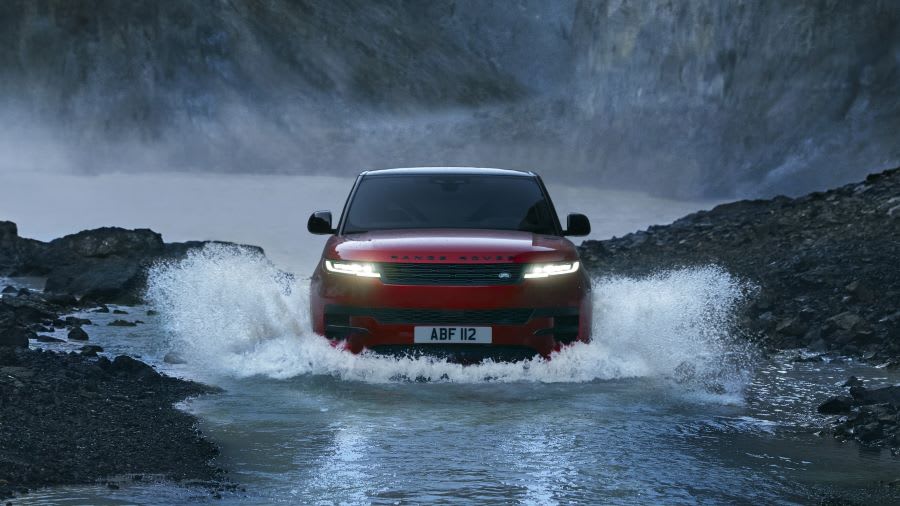
The Range Rover Sport (above), meanwhile, has an interior that looks better than it feels in places, but the driving experience is among the very best. Comfortable when you want it to be and agile in its sportiest settings, it’s brilliant on- and off-road. And it’s one of the best-looking SUVs out there right now.
Aside from that, you’re probably looking at the ultra-high luxury alternatives such as the Bentley Bentayga, which is fabulous in every way, but it’s enormous, or the more agile Aston Martin DBX. Or, of course, you could choose the Lamborghini Urus, which is a marvel of engineering, but less characterful than any other Lamborghini product.
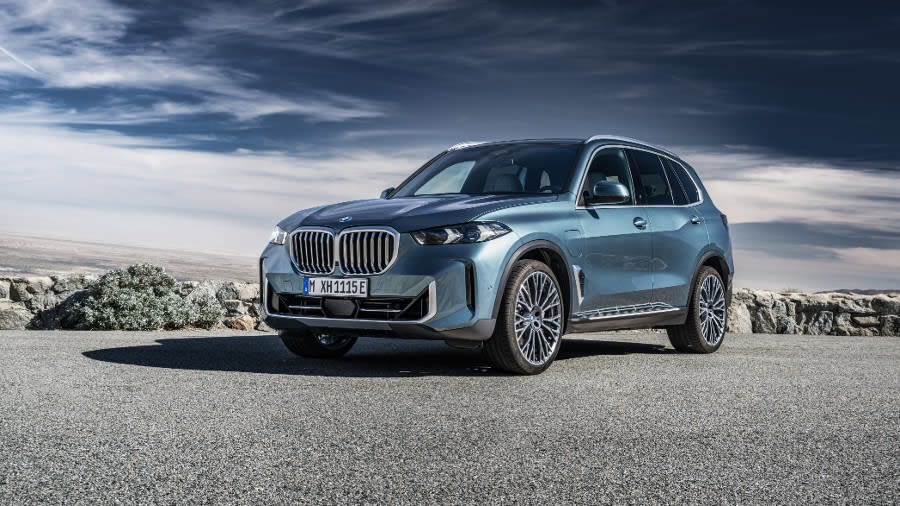
Verdict & Next Steps
The X5’s updates have, in many ways, made the big BMW more appealing, and they have been implemented without damaging the myriad talents already in evidence. The engine range is even better than before, the hybrid system is an improvement and the cabin feels that bit more modern. Combine that with the smart looks and impressive capability, and you’ve got a fantastic luxury SUV that doesn’t necessarily lead the class in any one area, but is among the best all-rounders out there.
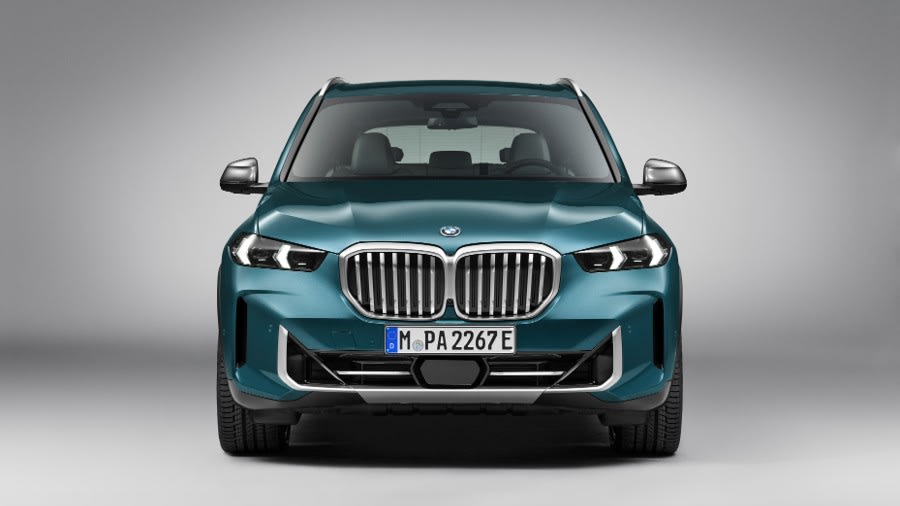
Where to next?
View latest BMW X5 lease deals - from just £690 per month ex VAT**.
Call us on 0118 3048 688 or hit the green 'Enquire' button for more details.
Looking for a great leasing deal? Check out our incredible range of Special Offers and Lease Deals.
New SUV? Read our latest Reviews and find the right model for you.
Want to know more about leasing? Take a look at our comprehensive Leasing Guides.
Interested in everything motoring? Why not catch up on all the latest Car Leasing News.
**Score based on Select’s unique meta score analysis, taking into account the UK’s top leading independent car website reviews of the BMW X5.
**Correct as of 08/04/2024. Based on 9 months initial payment, 5,000 miles annually, over a 48 month lease. Initial payment equivalent to 9 monthly payments, or £6,206.58 (Plus admin fee) Ts and Cs apply. Credit is subject to status.
